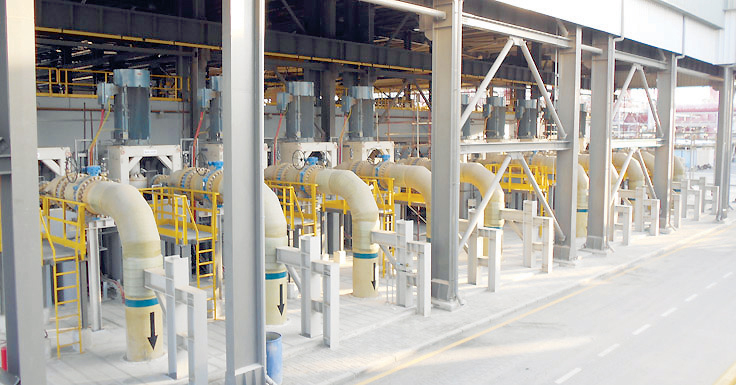

The Sultanate’s national potable water utility Diam (also known as the Public Authority for Electricity and Water) has pledged to reduce administrative and operational costs through efficiency enhancements — designed ultimately to ease its dependence on government subsidy to provide potable water to an estimated half a million customers around Oman.
The move, according to a top official of the state-owned utility, comes amid the ongoing fiscal downturn triggered by the slump in international oil prices that has constrained government funding to state-run enterprises.
“The increased pressure on government finances due to the fall in oil prices since 2014 has led to an increased focus on cost effectiveness in the Authority,” said Dr AbdulMalik bin Abdullah al Hinai, Chairman of the Board of Directors of Diam. This is particularly so because 52 per cent of our water is consumed by domestic customers who typically pay around only about one third of the cost of the water they consume and hence — in the absence of a substantial price increase — we rely heavily on government funds both as direct subsidy for our operational costs and to finance our capital works programme,” he added in the Authority’s 2016 Annual Report.
Total subsidy received from the government inched up to RO 185.724 million for 2016, up from RO 180.665 million a year earlier. Despite the overall increase, the subsidy per cubic metre of water distributed by the utility averaged around 900 baizas, mirroring that of 2015. The increase was primarily the result of an additional 35,300 customers joining Diam’s expanding customer base, which topped the 435,600-mark at the end of 2016, the Chairman noted.
In comparison, Diam generated RO 102.6 million in revenues last year, up 14.4 per cent from the previous year. Operational and administrative expenditure, on the other hand, jumped 6.6 per cent to RO 288.4 million, which explains the hefty grant that was required from the government in the form of subsidy to help bridge the deficit.
Already, Diam has notched significant success in its effort to reduce the substantial Revenues Vs Expenditure gap, according to Al Hinai. “The Board has taken particular interest in the control of costs over the last year and the Authority has made considerable progress in this area and in exploring alternative means of financing capital works. In the area of staff costs, we have severely restricted recruitment, reduced training and travel budgets, cancelled staff bonus payments, and sharply reduced overtime costs.
In operational costs we have introduced new performance-based operation and maintenance contracts which provide better results at lower cost, reduced our vehicle costs and are focusing on reducing our energy costs. On the revenue side improvements in management of tanker filling stations and changes to the tariffs charged to industrial and commercial customers have improved revenues by around 14 per cent,” the Chairman stated.
Also key to the utility’s efforts to boost revenues is a strategy to reduce the massive quantities of potable water that are not accounted for in the system. More than 30 per cent of Diam’s total potable water supply is lost due to a combination of factors: overflowing reservoirs, leaks, fraud, theft, lack of metering, and billing and metering errors.
According to Al Hinai, Diam has introduced several initiatives to reduce ‘non-revenue water’ (NRW), such as water pressure control, pipe replacement, new technology in leak detection and data availability improvements.
Conrad Prabhu
Oman Observer is now on the WhatsApp channel. Click here



